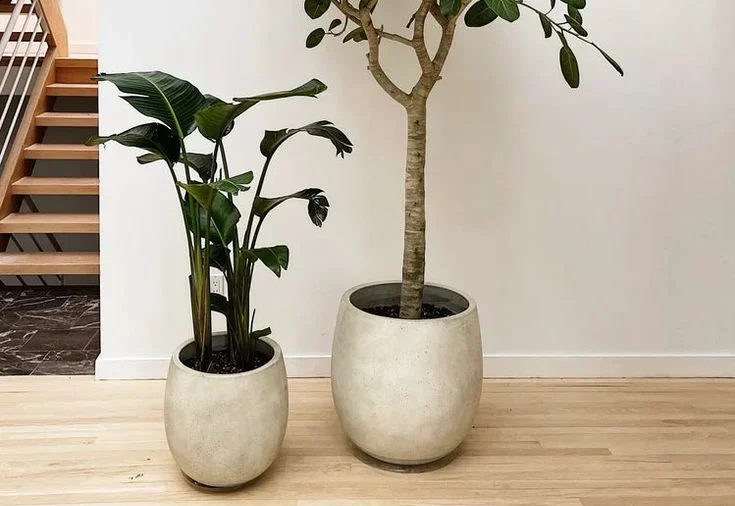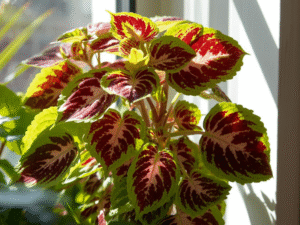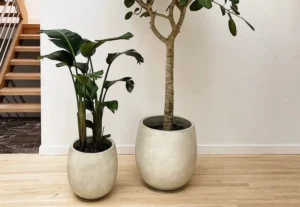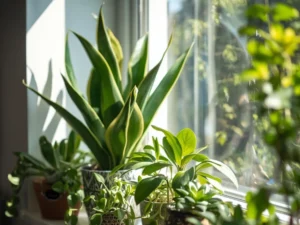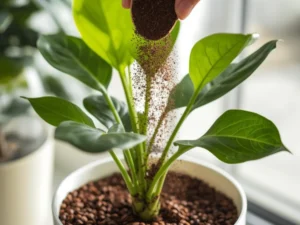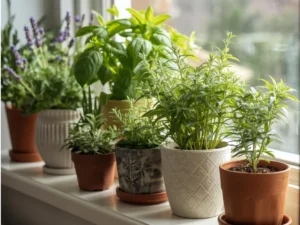If you’ve ever dreamed of turning your home into a lush, green retreat but struggle with dim rooms or minimal sunlight, you’re not alone. Finding the right house plant trees for low light can seem tricky, but with the right guidance, you can create a thriving indoor jungle — even in the darkest corners of your home.
Let’s explore the most resilient indoor trees, expert care tips, and how to make your low-light spaces come alive with natural beauty.
Why Choose Low-Light House Plant Trees?
Not every home has big, sunny windows. Apartments, basements, and office spaces often lack direct sunlight. Fortunately, certain house plant trees have evolved to flourish under low-light conditions.
These plants are ideal for busy homeowners or beginners because they’re low maintenance and incredibly forgiving. Moreover, they naturally purify the air, reduce stress, and enhance indoor aesthetics making your environment both healthier and more welcoming.
In fact, according to a study by NASA on indoor air quality, certain plants can remove up to 87% of toxins from the air in just 24 hours — a solid reason to bring greenery indoors. (Source: NASA Clean Air Study)
Top 7 House Plant Trees That Thrive in Low Light
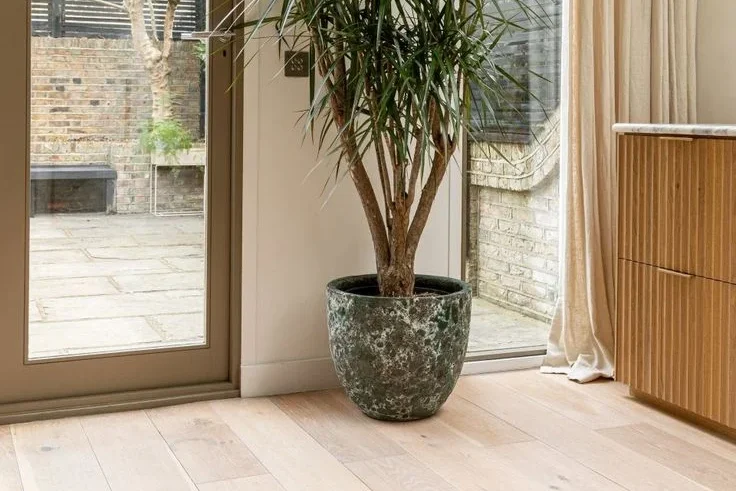
1. Ficus Lyrata (Fiddle Leaf Fig)
The Fiddle Leaf Fig is a stunning statement plant with broad, violin-shaped leaves. Though it prefers bright, indirect light, it can adapt to moderate shade once established.
Care Tip: Keep the soil slightly moist but not soggy, and rotate the pot regularly for even growth.
2. Dracaena Fragrans (Corn Plant)
This tropical beauty thrives in low-light environments and adds an instant tropical vibe to your living space.
Care Tip: Water sparingly; overwatering can lead to root rot.
3. Zamioculcas Zamiifolia (ZZ Plant)
Known for its glossy, waxy leaves, the ZZ Plant is practically indestructible. It’s perfect for offices and rooms with minimal natural light.
Care Tip: Allow the soil to dry out completely between waterings.
4. Aspidistra Elatior (Cast Iron Plant)
True to its name, the Cast Iron Plant can survive neglect, poor light, and inconsistent watering. It’s an excellent choice for shaded hallways or bathrooms. If you enjoy easy-care greenery, you might also like learning about repotting Aloe Vera plants, which share similar low-maintenance qualities and thrive beautifully indoors.
5. Chamaedorea Elegans (Parlor Palm)
The Parlor Palm has been a household favorite since the Victorian era. It grows well in low light and adds a soft, tropical feel to any room.
Care Tip: Mist occasionally to increase humidity.
6. Aglaonema (Chinese Evergreen)
With its colorful, patterned leaves, Aglaonema brightens dark corners beautifully. It’s also known for its air-purifying properties.
Care Tip: Wipe leaves gently to remove dust and promote better photosynthesis.
7. Sansevieria Trifasciata (Snake Plant)
The Snake Plant is nearly impossible to kill and can survive in the darkest corners. It also emits oxygen at night — perfect for bedrooms.
Care Tip: Water only when the soil is completely dry.
How to Care for Low-Light Indoor Trees

Even though these trees are low-maintenance, they still need proper care. Below are a few key practices to keep them healthy and growing.
1. Proper Watering
Overwatering is the number one killer of indoor trees. Since low-light plants photosynthesize slowly, they need less water. Always check the soil before watering — if the top inch feels dry, it’s time to hydrate.
2. Use Quality Potting Mix
A well-draining mix ensures roots don’t sit in water. Add perlite or peat moss for better aeration and nutrient retention.
3. Rotate Regularly
Since low light often comes from one direction, rotating your plants every week promotes even growth and prevents leaning.
4. Maintain Ideal Humidity
Low-light areas are often dry, especially during winter. Using a humidifier or pebble tray can help maintain consistent humidity levels.
5. Clean the Leaves
Dust buildup can block light absorption. Wipe leaves gently with a damp cloth once a week to keep them fresh and healthy.
Decorating Tips: Bring Life to Every Corner
Create Contrast with Textures
Combine large-leaf plants like the Fiddle Leaf Fig with slender types like Snake Plants for visual interest.
Use Decorative Pots
Modern ceramic or woven baskets complement your décor and elevate the look of your plant display.
Layer Lighting
Even in low-light homes, artificial grow lights can mimic sunlight and keep plants healthy year-round.
Common Mistakes to Avoid
Overwatering: Most low-light plants prefer slightly dry soil. However, beginners often assume more water means healthier growth, which can actually harm the roots. Therefore, always check the top layer of soil before watering.
Ignoring Pests: Even indoor plants can attract mites or fungus gnats; consequently, it’s important to inspect leaves regularly. Moreover, wiping them gently with a damp cloth can help prevent infestations.
Skipping Fertilizer: Low-light plants may not need much feeding, but in addition, using a balanced liquid fertilizer once a month during spring and summer promotes strong, vibrant growth. For example, organic fertilizer can improve soil quality over time.
Placing Too Close to Heat Sources: Heat from radiators or vents can dry out the leaves; similarly, cold drafts can also cause damage. Therefore, always position your plants in a stable environment with consistent temperature and humidity levels.
Benefits of Having House Plant Trees in Low Light
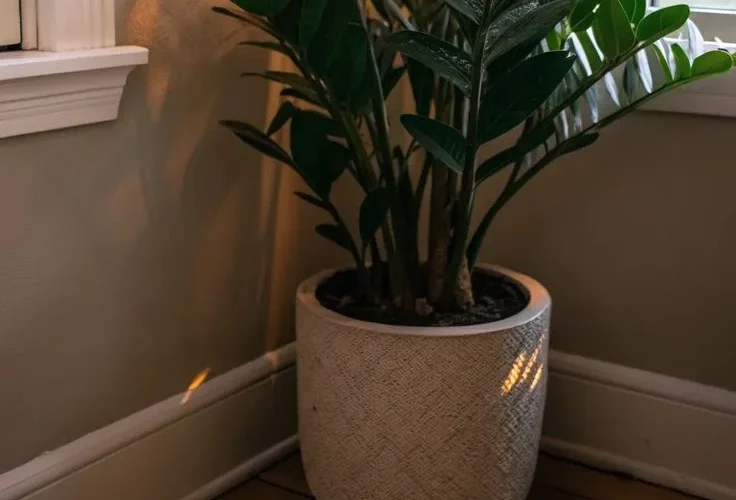
-
Air Purification: Many low-light plants remove indoor pollutants effectively.
-
Improved Mental Health: Greenery reduces anxiety and increases productivity.
-
Aesthetic Appeal: They add depth and natural beauty to dull spaces.
-
Sustainability: Indoor trees contribute to eco-friendly living and improve indoor ecosystems.
For additional research-backed guidance, explore The Spruce, a trusted home and garden resource that covers care, design, and plant benefits.
FAQs
1. Can plants really grow without sunlight?
Yes, many house plant trees can thrive under artificial or indirect light. Some even prefer shade over direct sunlight.
2. How often should I water low-light plants?
Water every 2–3 weeks, depending on humidity and soil moisture. Always check the top layer of soil before watering.
3. Which indoor tree is best for beginners?
The ZZ Plant and Snake Plant are the easiest to care for — perfect for beginners or frequent travelers.
4. Do these plants grow tall indoors?
Some, like the Fiddle Leaf Fig and Parlor Palm, can grow up to 6–10 feet indoors with proper care.
5. How can I make my low-light plants grow faster?
Supplement natural light with LED grow lights and use a diluted fertilizer monthly during the growing season.
Conclusion
Choosing the right house plant trees for low light doesn’t just enhance your space it transforms it. Whether it’s the resilient Snake Plant or the elegant Parlor Palm, these trees prove that beauty can thrive even in shade. Moreover, they help create an inviting atmosphere that feels both relaxing and refreshing. In addition, low-light trees are simple to maintain, making them ideal for anyone who wants greenery without extra effort.
For example, a Parlor Palm in the corner of your living room can instantly soften the space while purifying the air. Furthermore, with proper care, watering, and a little consistency, your indoor plants will reward you with lush greenery, cleaner air, and a peaceful atmosphere. However, remember that even low-light plants need some attention to thrive; therefore, don’t forget regular maintenance.
Consequently, by giving them minimal care, you’ll enjoy long-lasting natural beauty indoors. Similarly, these plants can boost your productivity and mood, especially in work-from-home setups. As a result, your surroundings will feel calmer and more balanced. Above all, low-light plants allow you to connect with nature even in artificial environments.
Meanwhile, they add a refreshing charm to dull corners and help you breathe easier. Additionally, their versatility means you can mix different species to achieve depth and texture. To elevate your interiors even further, explore Martha Stewart Home Decor for timeless ideas on blending natural greenery with elegant home styling. Finally, bring nature indoors one leaf at a time and let your home become a living, breathing sanctuary that reflects peace, balance, and natural beauty.

